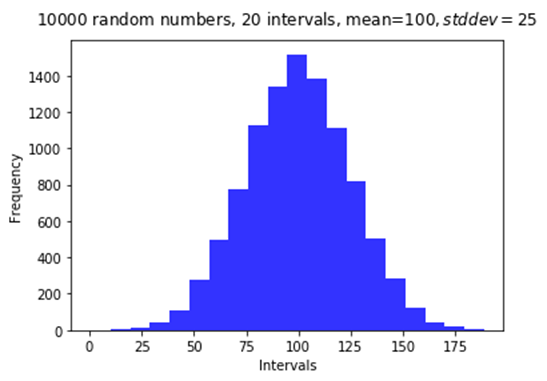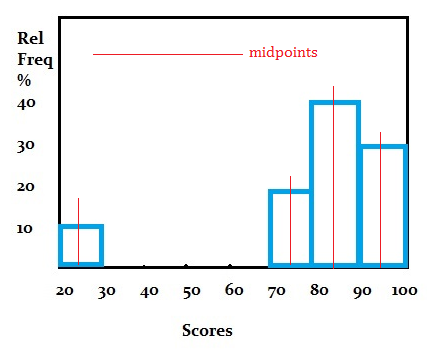

#Histogram maker midpoints how to#
These buttons will be greyed out if the radio button for Histograms is selected.ĭ Format: Opens the Frequencies: Format window, which contains options for how to sort and organize the table output. Note that the options in the Chart Values area apply only to bar charts. If requesting a histogram, the optional Show normal curve on histogram option will overlay a normal curve on top of your histogram, which can be useful when assessing the normality of a variable.

Histograms are the only appropriate option for continuous variables bar charts and pie charts should never be used with continuous variables. Options include bar charts, pie charts, and histograms. This situation is more often associated with ordinal categorical variables.Ĭ Charts: Opens the Frequencies: Charts window, which contains various graphical options. For example, this would be the case if you had coded anyone between the ages of 30 and 39 as 35 (source: IBM SPSS Statistics Information Center).

Note: The Values are group midpoints check box should only be selected when your data values represent the midpoint of a range. If your selections request overlapping information, that information will not be printed twice. You can select more than one option in the Percentile Values group. The percentiles should be entered as whole numbers. The Percentiles option allows the user to specify the exact percentiles to report.Or, if the user specifies n=10, then the output will report the 10th, 20th, 30th. For example, if the user specifies n=5, then the output will report the 20th, 40th, 60th, and 80th percentiles. The Cut points for n equal groups option will divide the dataset into n equally sized groups and report the percentiles.The Quartiles option produces the first, second, and third quartiles (i.e., the 25th, 50th, and 75th percentiles, respectively).One noticeable exception to this is the Percentile Values group, which is unique to the Frequencies procedure:

Most of these statistics are identical to the ones that can be obtained with Descriptives, Compare Means, or Explore, so they will not be covered again here. Most of the statistics in the Central Tendency, Dispersion, and Distribution groups are valid for continuous variables the only exception is the Mode, which very rarely has a useful interpretation for situations involving continuous variables. You can add several variables to this box to obtain statistics for each variable.ī Statistics: Opens the Frequencies: Statistics window, which contains various descriptive statistics, most of which are suitable for continuous numeric variables. To include a variable for analysis, double-click on its name to move it to the Variables box. To call the Frequencies procedure, click Analyze > Descriptive Statistics > Frequencies.Ī Variable(s): The variables to analyze with the Frequencies procedure. The Frequencies procedure can also produce histograms with or without a normal distribution overlaid on the graph.


 0 kommentar(er)
0 kommentar(er)
